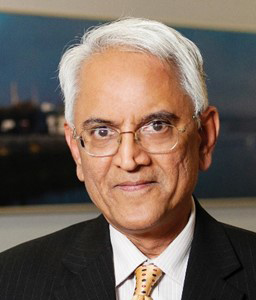While wanting US technological and security support to facilitate its rise, India does not acknowledge reciprocal obligations, even on a common challenge like China.
Writing in the US journal Foreign Affairs (‘America’s bad bet on India’), American political analyst Ashley Tellis describes a mismatch of mutual expectations in the India-US relationship. It merits examination from an Indian perspective. The bilateral relationship was given new impetus by the two governments in the early 2000s. It was catalysed by (among other interactions) an intensive dialogue of National Security Advisors Brajesh Mishra and Condoleezza Rice, which conceptualised a strategic partnership in nuclear energy, space and defence, facilitated by dismantling the decades-old technology denial regimes in India.
The US saw attractive opportunities in India’s economic liberalisation, defence imports and nuclear energy programmes. India was keen to shed Cold War straitjackets and benefit from trade, investment, technology and defence partnerships with the superpower.
There was a larger strategic backdrop. The US saw a strong, democratic India as a counterfoil in Asia to a rising China that could soon challenge its dominance. India welcomed the prospect of US support in restraining inimical Chinese actions in its neighbourhood and beyond.
These interests inspired the India-US nuclear deal by which the US almost single-handedly rearranged the global non-proliferation architecture that it had carefully built over decades, to permit civil nuclear cooperation with India.
For much of this century, American political attention was focused more on Europe, Russia and West Asia than on the strategic challenge from China. The economic interests of Wall Street, Silicon Valley and Hollywood in China prevailed over geopolitical considerations. Hence, as External Affairs Minister Jaishankar put it, America’s trumpet “sounded increasingly uncertain” in the Asia-Pacific.
The US decisively altered course during the Trump administration, and took China head-on, with aggressive tariffs, a combative Indo-Pacific posture and technology denials. The Biden administration has now ratcheted up the pressure a few notches, raising the spectre of a military confrontation over Taiwan.
With mounting US-China tensions and India-China relations hitting rock bottom as well, Tellis believes that Washington has moved from the Bush-Obama ambition of strengthening India against China’s dominance, to the “more expansive notion” that the US could induce India to join a US military coalition to contain China. He makes the obvious point that this is unlikely, as long as China has the capacity to retaliate by threatening India’s security “in significant ways”.
Yet, this mismatch of expectations appears to reinforce a US belief (as Tellis tells it) that even while wanting US technological and security support to facilitate its rise, India does not acknowledge any reciprocal obligations, even on a common challenge like China. It is important for the bilateral relationship that this perception be rectified.
There are obvious asymmetries of capacities and interests in the India-US relationship. For India, it is the most consequential relationship in the breadth and depth of its bilateral and strategic content. As a superpower, the US has important interests beyond India—in the South Asian subcontinent and beyond.
The asymmetry extends to the nature of the China challenge. India has issues on the border, with its support for Pakistan and unfriendly international actions. For the US, while there are larger issues, the most immediate threat is to its dominance in the Western Pacific.
Beyond the issues feeding confrontation, the US National Security Strategy identifies the need for engaging with China on climate change, public health, international terrorism and a nuclear North Korea. This means that confrontation has to be tempered with tactical accommodation in various situations. India has to recognise this reality.
Defence cooperation has been a major success of the India-US partnership. But its main component is US military sales, whereas India wants technology transfers to eventually manufacture its major weapon systems. Over the years, a number of initiatives have been launched for the exchange of advanced military technologies and coproduction of defence systems. The US administration’s hesitation to clear transfers (possibly on apprehensions of leakage to US adversaries) has been reinforced by private companies’ reluctance to part with intellectual property. For them, India is a relatively small, commercially unviable defence market.
The recently launched India-US initiative on Critical and Emerging Technology (iCET) seeks to engage both governments, their businesses and research entities in exchange for cutting-edge civil and defence technologies. The two major pluses of iCET are that it involves private companies and that it signals high-level political commitment: it is led by the two National Security Advisers. Its success depends on US willingness to permit transfer of sensitive technologies, as well as Indian willingness to make it commercially worthwhile for US entities and politically worthwhile for the US administration. An integrated approach, including an accommodative investment regime, is needed.
An asymmetry of expectations derives also from the different prisms through which the relationship is viewed. In the US, the interagency process, coordinated by the National Security Council, receives inputs from the sectors of foreign policy, defence, intelligence, industry and legislative processes. It sometimes throws up reactions that complicate mutual interests. We saw this during our negotiations in the early 2000s; Condoleezza Rice describes some incidents in her memoirs.
Equally, perspectives in India depend on the departmental or sectoral interests involved. A whole-of-government approach would appreciate the larger strategic picture, find tradeoffs between compromises and gains, and reconcile cross-sectoral concerns and interests.
The bottom line is that not only India’s interests, but also US strategic interests, should be served by an India that becomes strong enough to withstand Chinese assertiveness and presumptive hegemony in the region. Apart from other political and economic interests, US engagement with India aims (as publicly stated) to dilute Russia’s influence on it and to obviate a Russia-China-India axis. From India’s perspective, geography and current geopolitical realities preclude a military coalition, but many strands of convergent interests compel a strong strategic partnership. The challenge is to rescue the India-US relationship from exaggerated expectations.










Post new comment